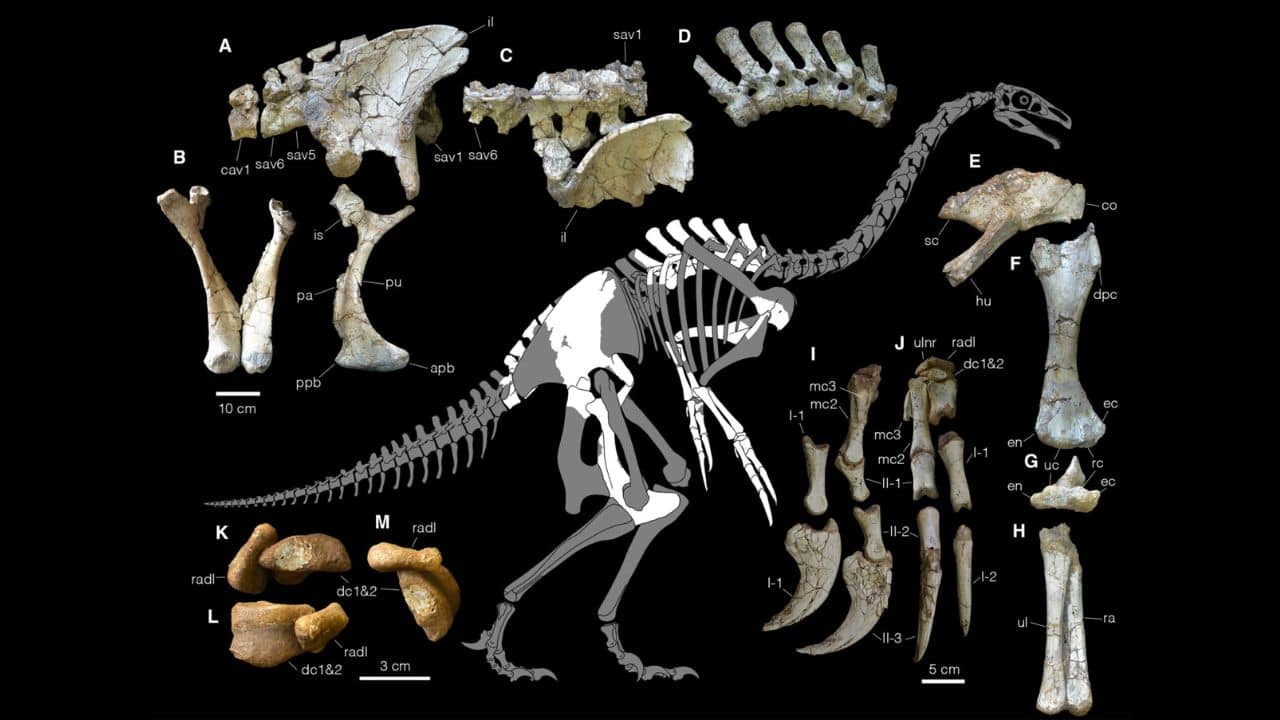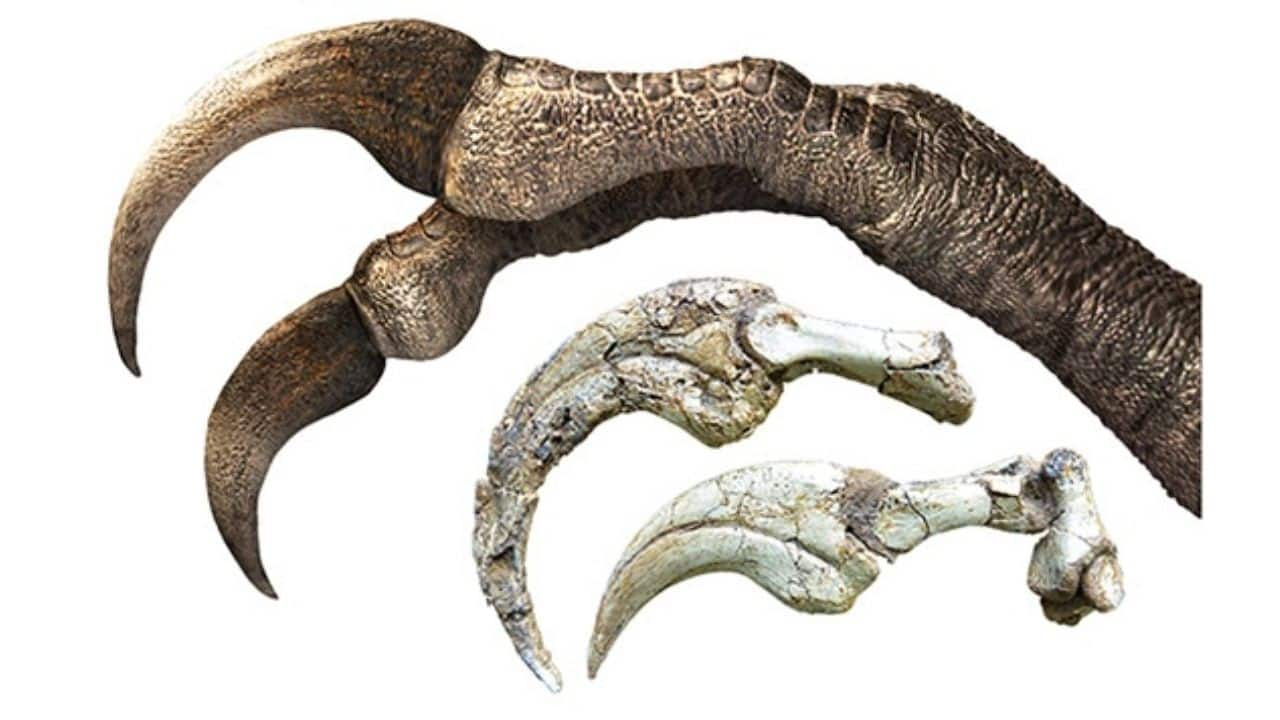



A recently discovered dinosaur’s claws are making waves. Researchers have unearthed a feathered, two-legged dinosaur with huge claws named Duonychus tsogtbaatari. The fossil is around 90 to 95 million years old and was found in the Gobi Desert in Mongolia.
There Was Only One Finger on This Dinosaur
Duonychus tsogtbaatari possessed only two fingers, unlike the three of other therizinosaurs. A big, curled claw measuring nearly 30 centimeters was present at the end of each finger. Similar to sloths or chameleons, researchers believe this unique feature assisted the dinosaur in grasping plants.
 Reconstructed skeleton and key elements of Duonychus tsogtbaatari. (Image: Kobayashi et al., iScience, 2025)
Reconstructed skeleton and key elements of Duonychus tsogtbaatari. (Image: Kobayashi et al., iScience, 2025)
A Mongolian expedition found the fossil in 2012. It was found in the well-preserved dinosaur fossils of the Bayanshiree Formation. A relatively complete arm, ribs, part of the pelvis, and vertebrae are all included in the specimen.
Astoundingly Well-Preserved Claws
The condition of the claws is one of the most intriguing aspects. Most dinosaur claws have nothing but their bony core left. The keratin sheath, which exposes the true size and form of the claws, remains in this specimen. The biggest three-dimensional dinosaur claws ever found with the sheath intact, say scientists.
 An artist's depiction of the two-fingered hand alongside fossil images. (Image: Kobayashi et al., iScience, 2025)
An artist's depiction of the two-fingered hand alongside fossil images. (Image: Kobayashi et al., iScience, 2025)
The research, led by Yoshitsugu Kobayashi of Hokkaido University, suggests that Duonychus could have employed its claws for eating. They could have been utilized for territorial fights, mating, or protection, though.
The find expands our understanding of the plant-eating theropods called therizinosaurs, which inhabit North America and Asia. The findings were published in iScience.
Discover the latest Business News, Sensex, and Nifty updates. Obtain Personal Finance insights, tax queries, and expert opinions on Moneycontrol or download the Moneycontrol App to stay updated!
Find the best of Al News in one place, specially curated for you every weekend.
Stay on top of the latest tech trends and biggest startup news.